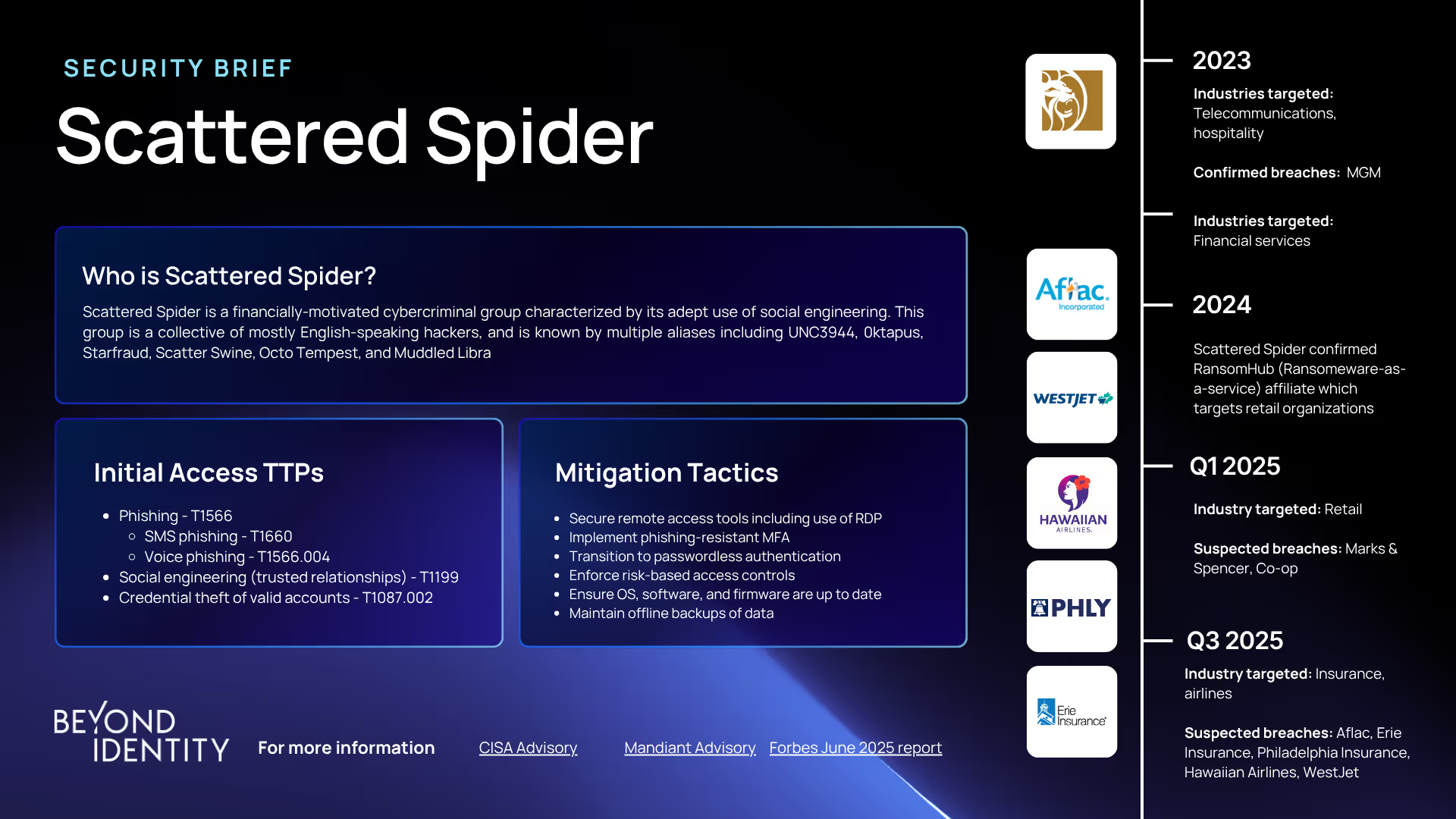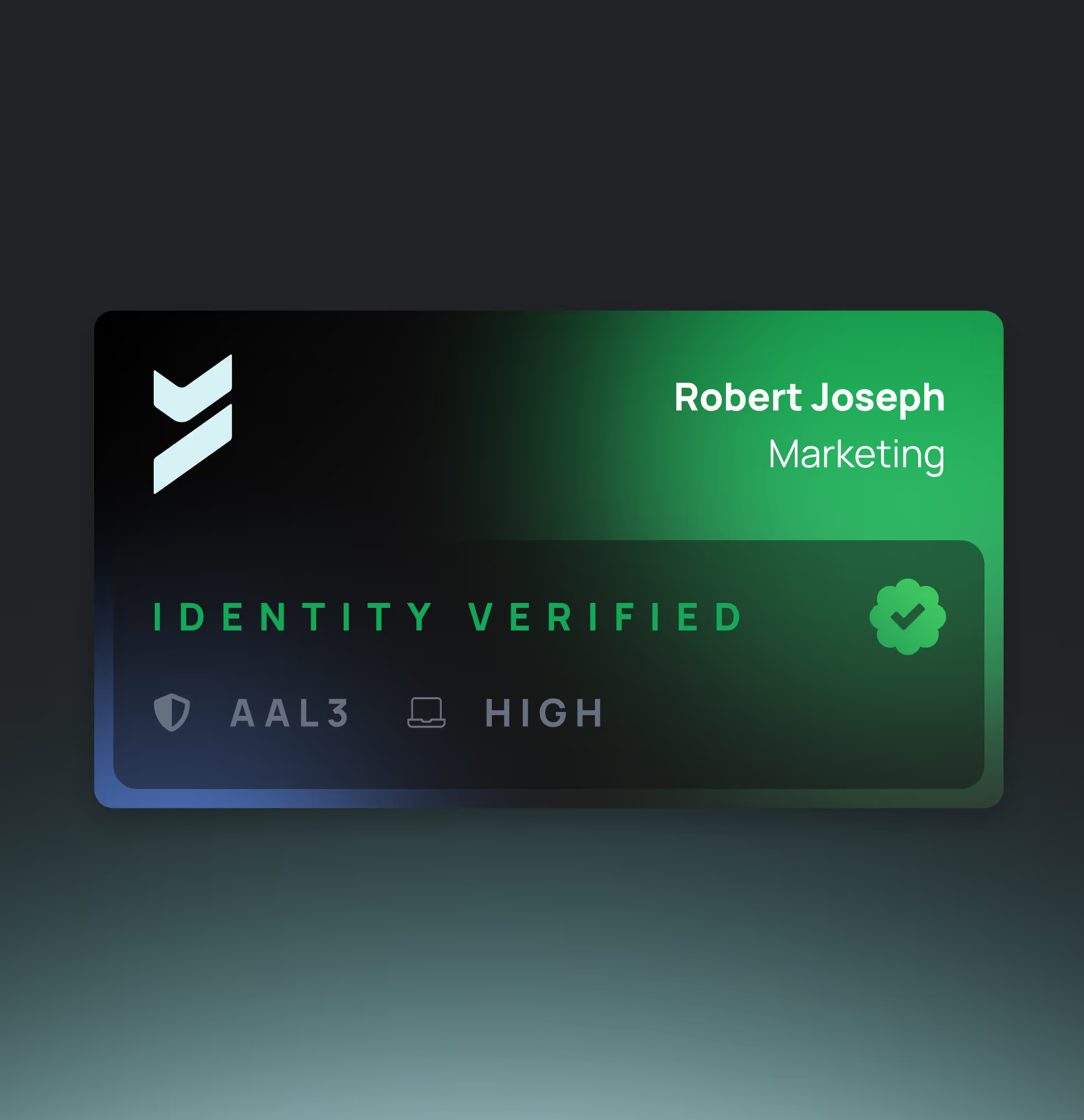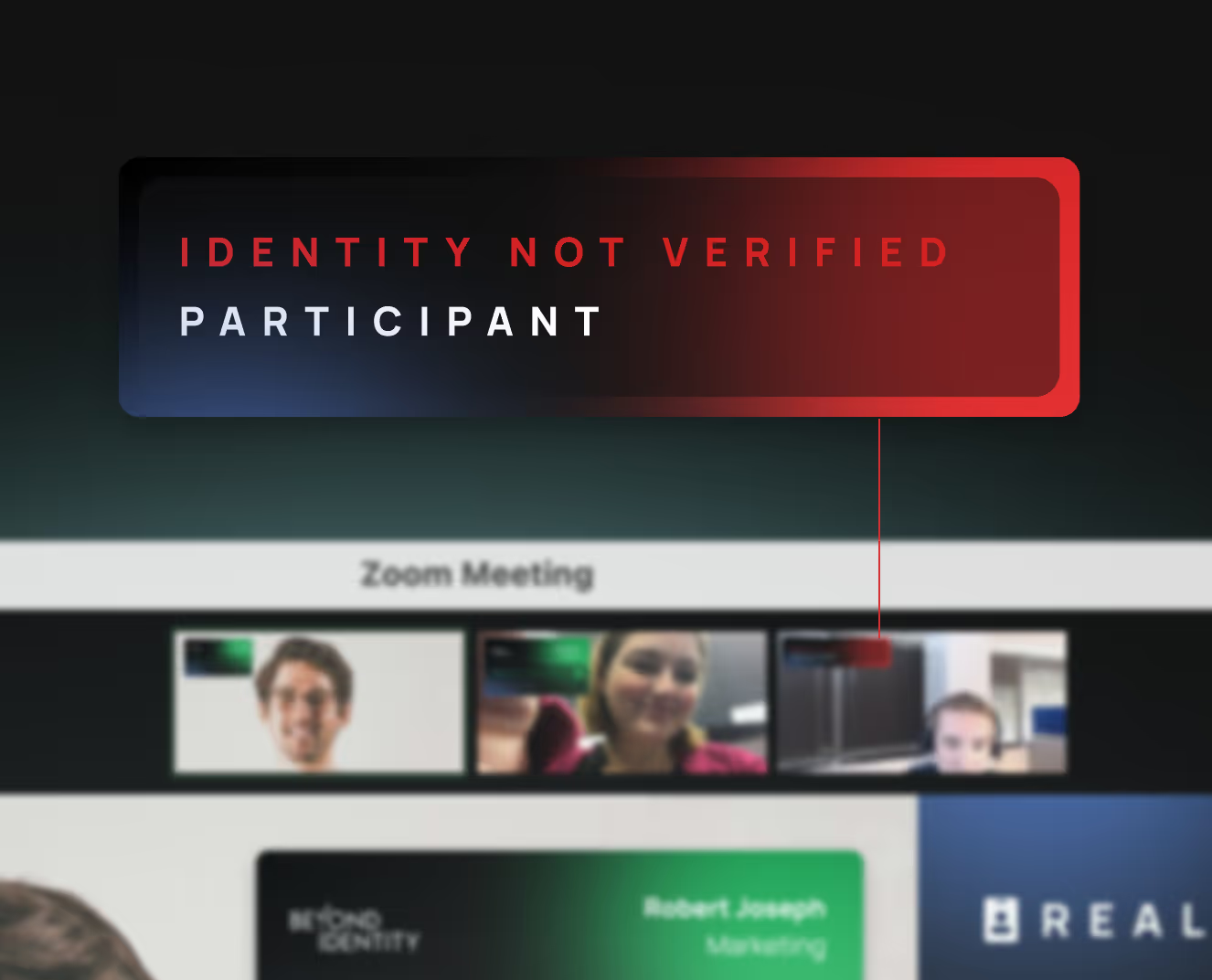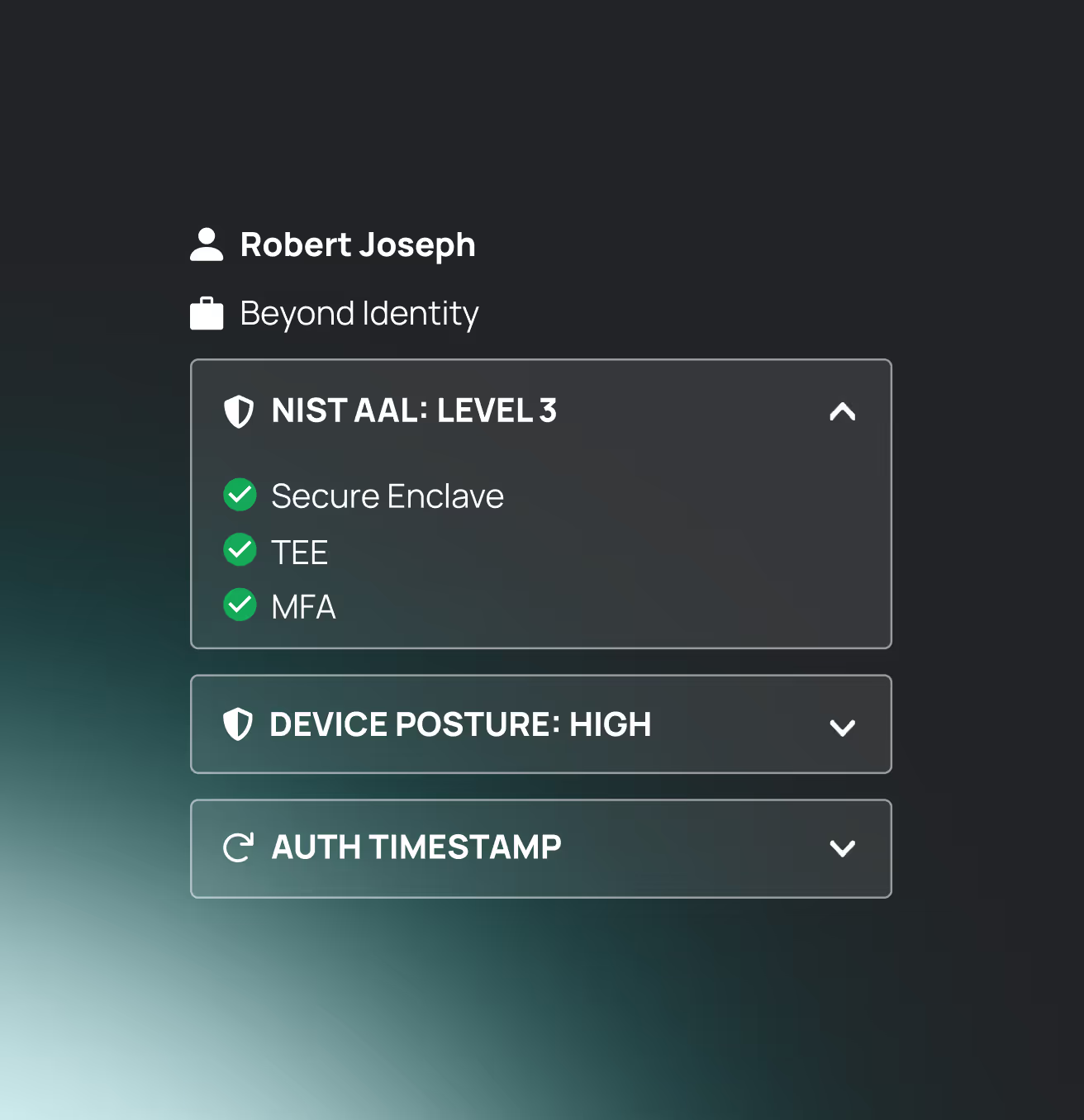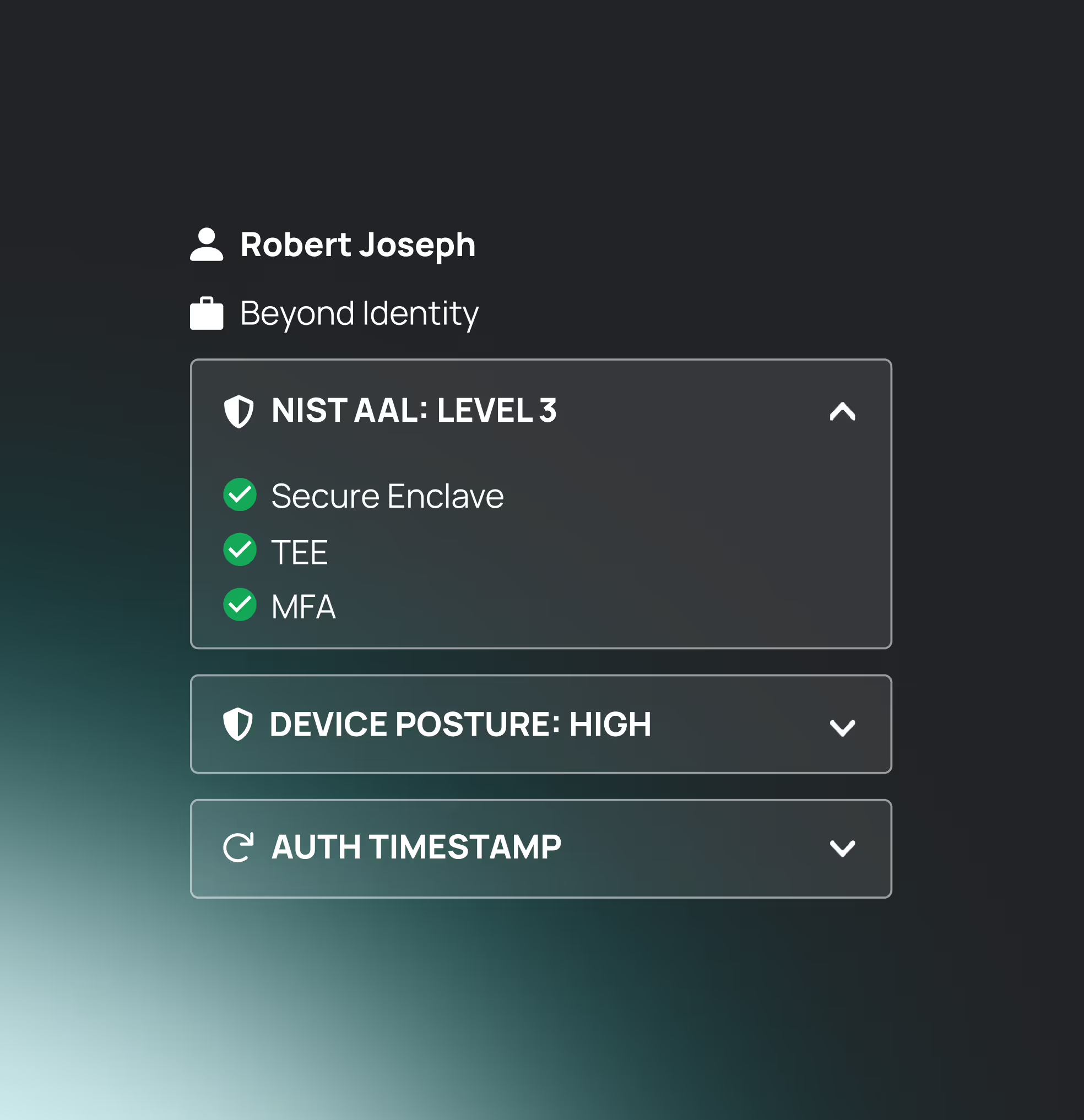Make AI impersonation fraud impossible
Ensure digital communication is with verified users, on a trusted devices with RealityCheck.

Detection is unreliable
Don’t try to detect deepfakes—make them irrelevant.
Prevent AI fraud before secrets are shared
Verify both the user and the device behind the camera at login and during the meeting or chat.
Verified identity, verified posture, verified presence
Deepfakes, impersonators, and unverified callers get flagged before they can say a word.
Remove suspicious users
Use insights from the tamperproof risk signals panel to revoke access for unauthenticated participants, before they cause damage.

Why Beyond Identity?
Other deepfake detectors leave organizations exposed to modern threats. Beyond Identity’s RealityCheck solution blocks those threats at the source.
Validating both users and devices continuously, as separate
but equally important requirements for risk-based authentication.
Single-point in time authorization of users only, oftentimes using phishable factors that can leave organizations open to risk.
Frictionless
Authenticates users through built-in biometrics or device unlock — no codes, links, or second devices required.
Frustrating
Adds friction with passwords, OTPs, push notifications, and secondary devices.
100% Phish-resistant
100% resistant — uses tamper-proof, device-bound cryptographic passkeys.
Vulnerable
Relies on phishable factors like SMS, OTP, or push approvals.
operation
100% Passwordless
Passwords are fully eliminated across devices and operating systems.
Relies on passwords
Passwords are required for setup or fallback authentication.
validation
User and device
Authenticates both user identity and device posture (e.g., OS version, encryption, firewall).
Users only
Focuses on user identity only; device trust is ignored.
Always-on
Monitors user and device compliance after login; revokes access if the user or device drifts out of policy.
Static
Performs static checks at login — no reevaluation post-authentication.
Continuous
Continuously enforces fine-grained policies across managed and unmanaged devices.
Static
Provides no visibility into device security posture.
integration
Fully integrated
Integrates natively with CrowdStrike, Intune, Jamf, Okta, SentinelOne, and others to enforce conditional access.
Limited
Limited or surface-level integrations, often lacking enforcement.
Enhanced
Exports cryptographically linked user-device logs to SIEMs (JSON/syslog) for forensic investigation.
Siloed
Siloed logging; minimal context for incident response.
policy enforcement
Easy
Built-in controls enforce Zero Trust and compliance frameworks (e.g., NIST 800-207) by design.
Complicated
Admins must manually configure controls; inconsistent and hard to scale.
Compliant
Designed from the ground up to enforce Zero Trust — no implicit trust, continuous validation of users and devices.
Immature
Still perimeter-based; lacks continuous trust evaluation.
Hiring Fraud Is Costing You More Than You Think
Inside the CrowdStrike 2025 Global Threat Report: AI as a threat “force multiplier”
Scattered Spider: How to Effectively Defend Against This Aggressive Threat
